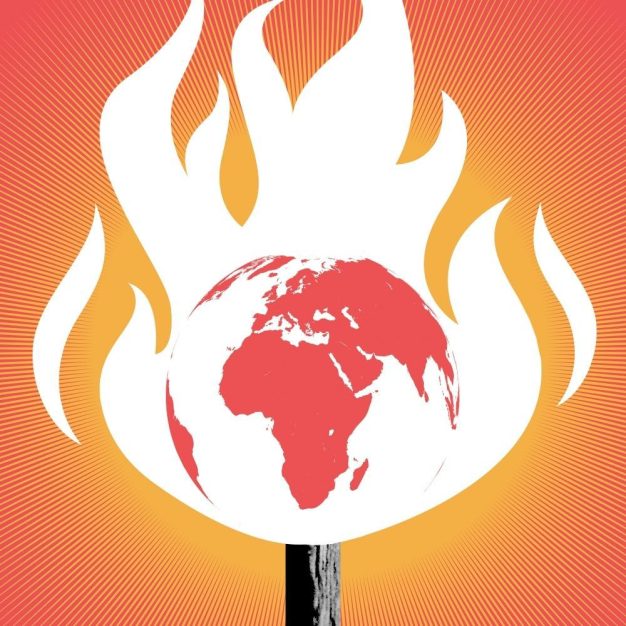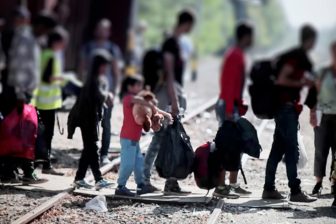
Climate coalition: ‘Funds for world’s hotspots are neglecting the needs of children’
Children are being failed by climate funding commitments, despite bearing the brunt of the climate crisis, according to a new multi-agency report.
Members of the Children’s Environmental Rights Initiative (CERI) coalition; Plan International, Save the Children, and UNICEF, found that just 2.4 per cent of key global climate funds can be classified as supporting child-responsive activities.
And according to UNICEF’s Children’s Climate Risk Index, more than a billion children are at extremely high risk of the impacts of the climate crisis.
Maria Marshall, a 13-year-old UNICEF child advocate and climate activist from Barbados said, “Children are the future, but our future is shaped by the actions of those making decisions in the present, and our voices are not being heard. As this report shows, funding climate solutions is an obligation, but how that money is spent also matters. Children’s needs and perspectives must be included.”
‘Our voices are not being heard’
The study, Falling short: addressing the climate finance gap for children used a set of three criteria to assess if climate finance from key multilateral climate funds (MCFs) serving the UNFCCC and Paris Agreement were: addressing the distinct and heightened risks they experience from the climate crisis, strengthening the resilience of child-critical social services and empowering children as agents of change.
“The findings are stark,” said Kabita Bose, Country Director at Plan International Bangladesh. “Urgent and effective investment is key to adapting to climate change, and is particularly critical for children, especially girls who are highly susceptible to the short and long-term impacts. Yet current spending almost ignores children entirely – this needs to change.”
The report found that out of all the money given by MCFs for climate-related projects over a period of 17 years until March 2023, only a small portion (2.4 per cent) met all three of the requirements which amounted to only $1.2 billion. The report also says that this number likely reflects an overestimate, meaning that even less money may have met all the requirements.
“Children, especially those already affected by inequality and discrimination, have done the least to cause climate change but are most affected by it. Climate finance offers an opportunity to tackle these injustices by considering the needs and perspectives of children,” said Kelley Toole, Global Head of Climate Change at Save the Children. “This has been woefully inadequate to date but can and must change. To really tackle the climate crisis, we must put child rights at the heart of our response and ensure children’s voices are heard”.
‘Every child is exposed to at least one climate hazard’
While MCFs provide a relatively small share of overall climate finance, the degree to which these funds consider children matters greatly. MCFs have a vital role to play in agenda-setting, and in catalysing and coordinating investments by other public and private finance institutions, including at national levels, which are necessary to drive a broader change.
Children are disproportionately vulnerable to water and food scarcity, water-borne diseases, and physical and psychological trauma, all of which have been linked to both extreme weather events and slow-onset climate effects. There is also evidence that changing weather patterns are disrupting children’s access to basic services such as education, healthcare, and clean drinking water.
“Every child is exposed to at least one – and often multiple – climate hazards. The finance and investment that is desperately needed to adapt critical social services like health and water to climate hazards is insufficient and largely blind to the urgent and unique needs of children. This must change. The climate crisis is a child rights crisis, and climate finance must reflect this,” said Paloma Escudero, Special Adviser for Climate Advocacy at UNICEF.
The report highlights that when it comes to children, they are often viewed as a vulnerable group rather than being recognised as active stakeholders or agents of change. Less than four per cent of projects, amounting to just seven per cent of MCF investment ($2.58 billion), give explicit and meaningful consideration to the needs and involvement of girls.
‘Focus should be on reaching the most vulnerable’
The report is informed by the voices of children from around the world, who said that they face increased risks because of climate change. A teenage girl in Zimbabwe said, “In Chiredzi, we learned that some girls cannot swim across flooded rivers to go to school or go home whilst boys can. Girls must walk for up to 10-15km to get to school. They get tired along the way before they even start classes.” A 13-year-old boy from Bangladesh added, “Lots of large-scale disasters hit our district which causes people to become impoverished, and children like us are engaged in child labour.”
The CERI coalition is urging multilateral climate funds, as well as other climate finance providers providing climate finance at both the international and national levels, to act quickly and address the adaptation gap. They are specifically calling for funding to cover losses and damages caused by climate change. This funding should prioritise the well-being of children and critical social services that support them. The focus should be on reaching and assisting the children who are most vulnerable and at high risk due to climate impacts.
Text courtesy of UNICEF




